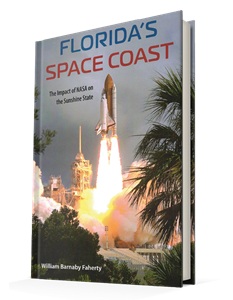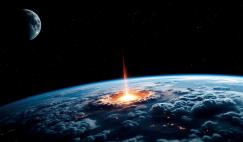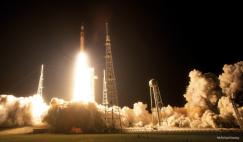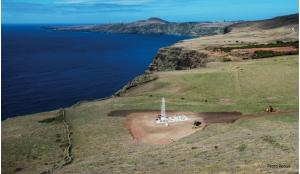Anyone with even a passing interest in space history knows that Florida was the launching point for Apollo lunar exploration and Space Shuttle missions to the International Space Station. Those who have visited the sunshine state may also know that the area around Cape Canaveral brands itself as the Space Coast. This book, which is part of a series on Florida’s history and culture, serves to enhance that understanding by analysing the impact of the space endeavour on the area.
The author, who has documented the history of Kennedy Space Center since 1972, begins with a decision by the US military, in 1946, to use the deserted and mosquito-infested reaches of the Cape to test guided missiles. In their Foreword, the series editors summarise the transformation of “swamp and grove” into a working launch site as the result of “liberal applications of DDT and federal funds”.
The author describes how “100,000 people, the spaceport workers and their families” found none of the usual facilities there and had to “drive on a narrow road to Orlando” to buy what they needed. But this was nothing compared to driving a Saturn V-stacked Crawler down a road of crushed river rock: “Imagine moving the Washington monument three miles down Pennsylvania Avenue”, the author says, and “keeping it erect while climbing the terrace in front of the Capitol”. He goes on to cover the Apollo programme and its effects on the area.
The book concludes with what the author terms the “privatization of the Shuttle” in 1997, and thereby misses the developments of the early 21st century. It does, nevertheless, meet the brief of the series editors in documenting “the remarkable transformation of Brevard County into a metropolitan and economic power”. The short section of black and white photos adds little to the story for anyone who knows about Florida’s relationship with space exploration, but those interested in learning more will appreciate the chapter notes, recommended reading and the useful index.
In many ways, the book exhibits a dual personality in being a dispassionate, academic history, while serving as a bit of an autobiography. In my opinion, they do not sit well together here and add to the slightly parochial feel of the book. The author mentions being hired to “head a two-man team” to tell the story of Apollo more often than necessary, while the continual reference to religion is notable (explained perhaps by the author’s role as a Jesuit clergyman). All in all, I would prefer what is ostensibly a history book to stick to history.











